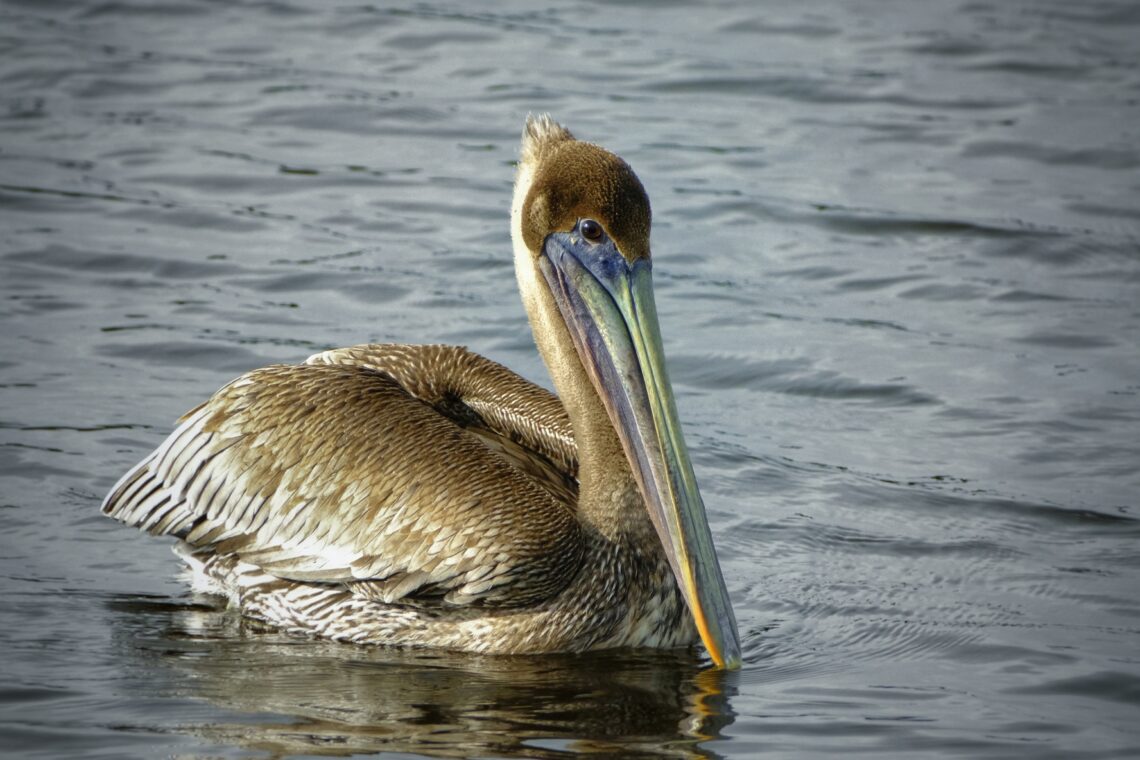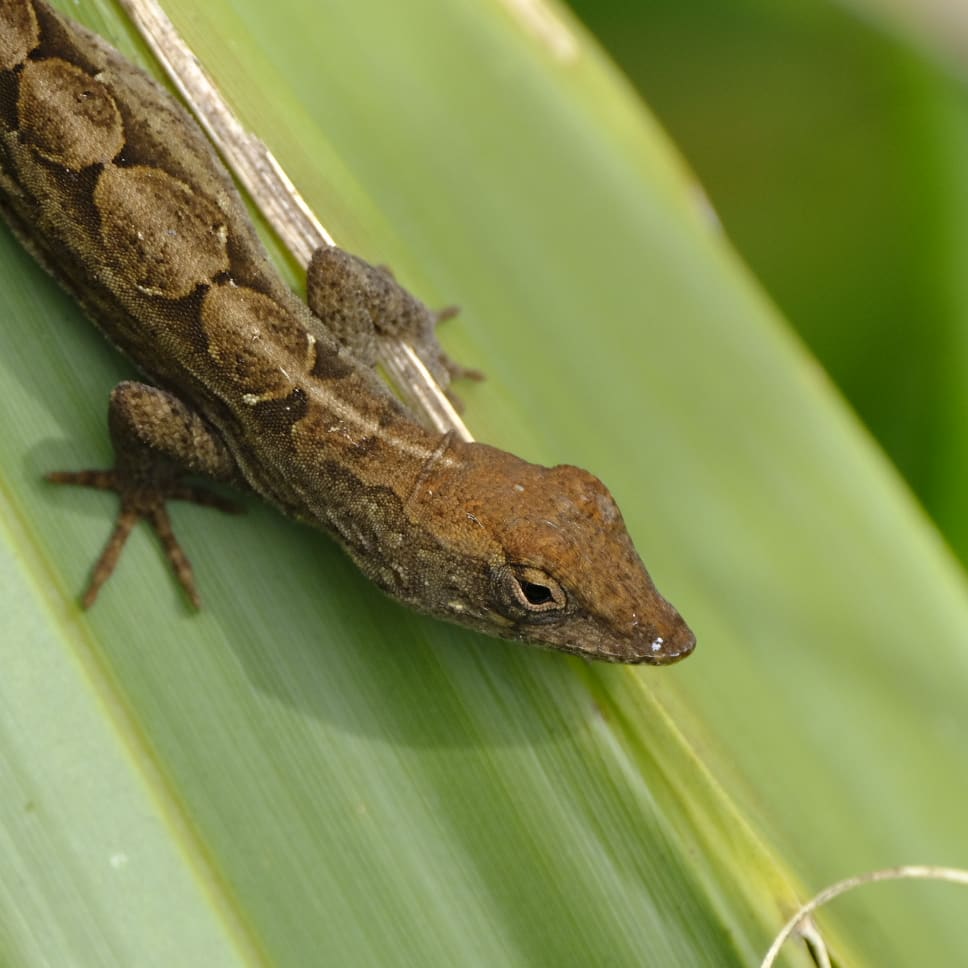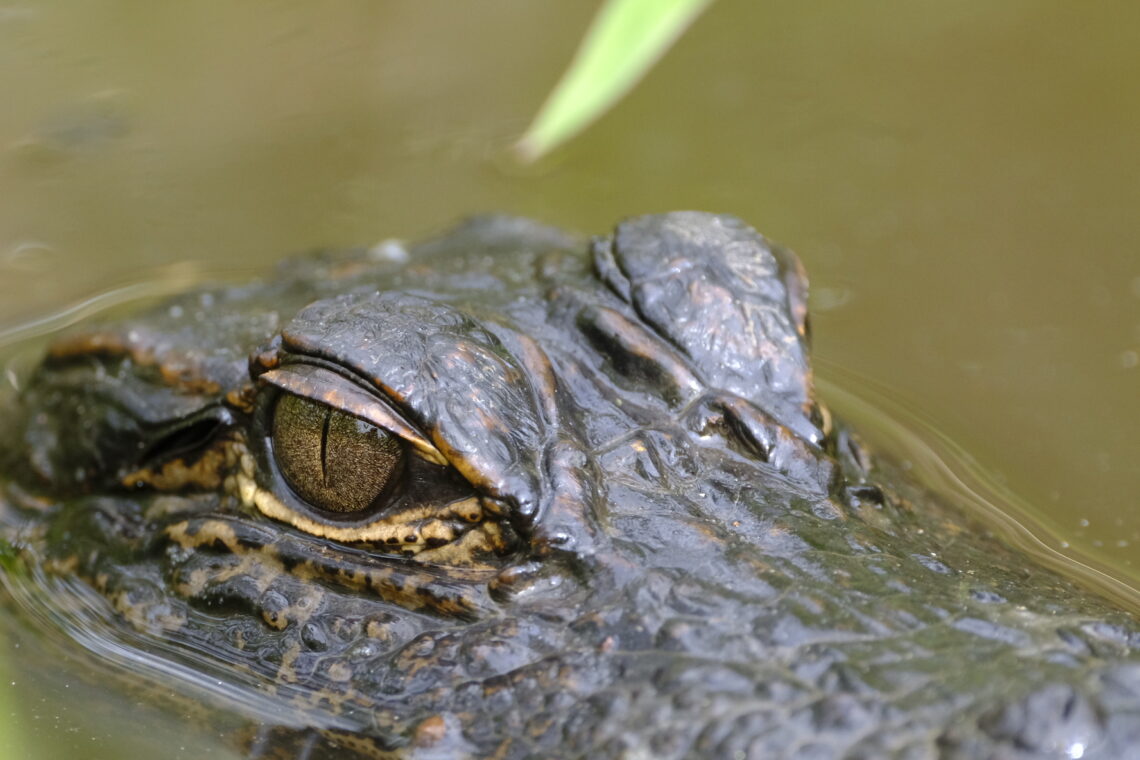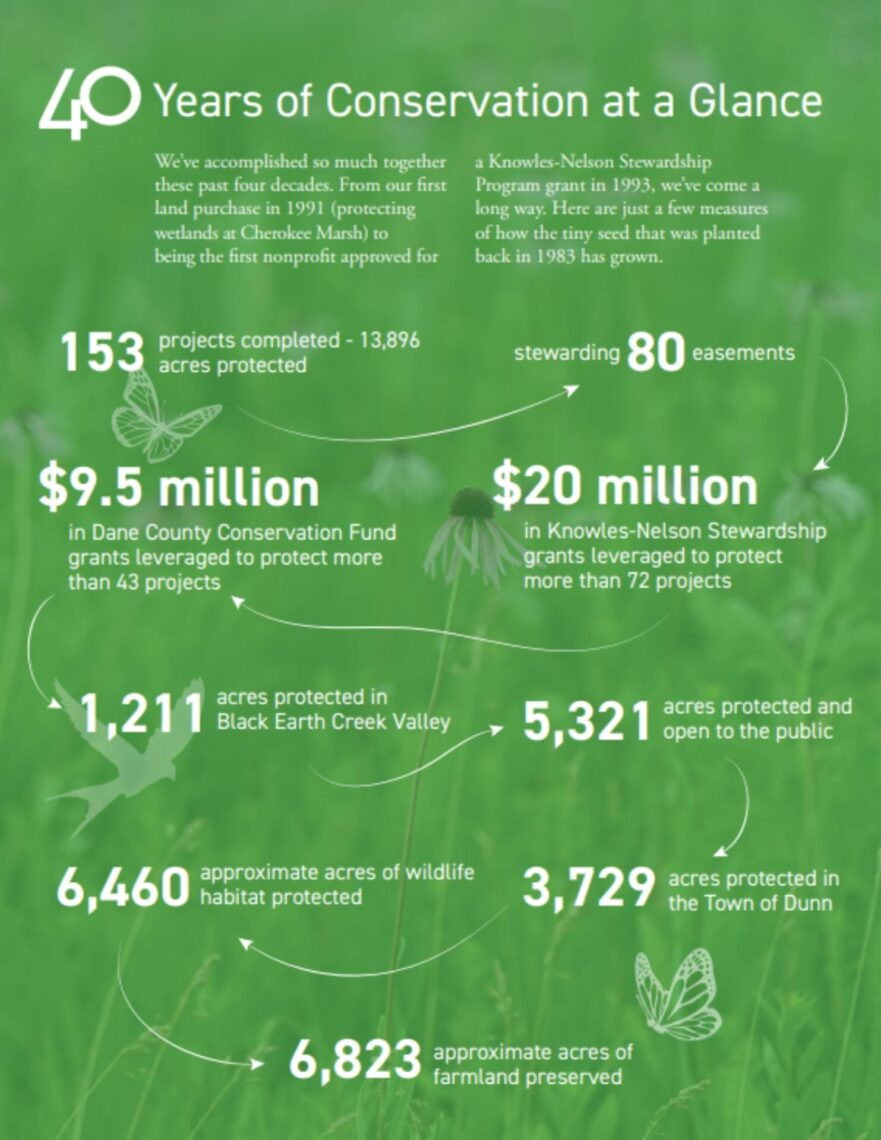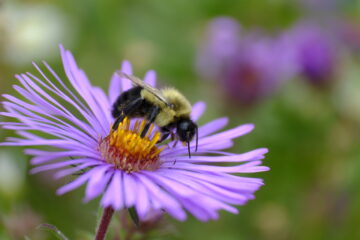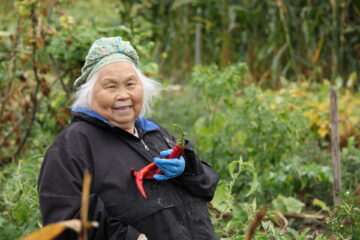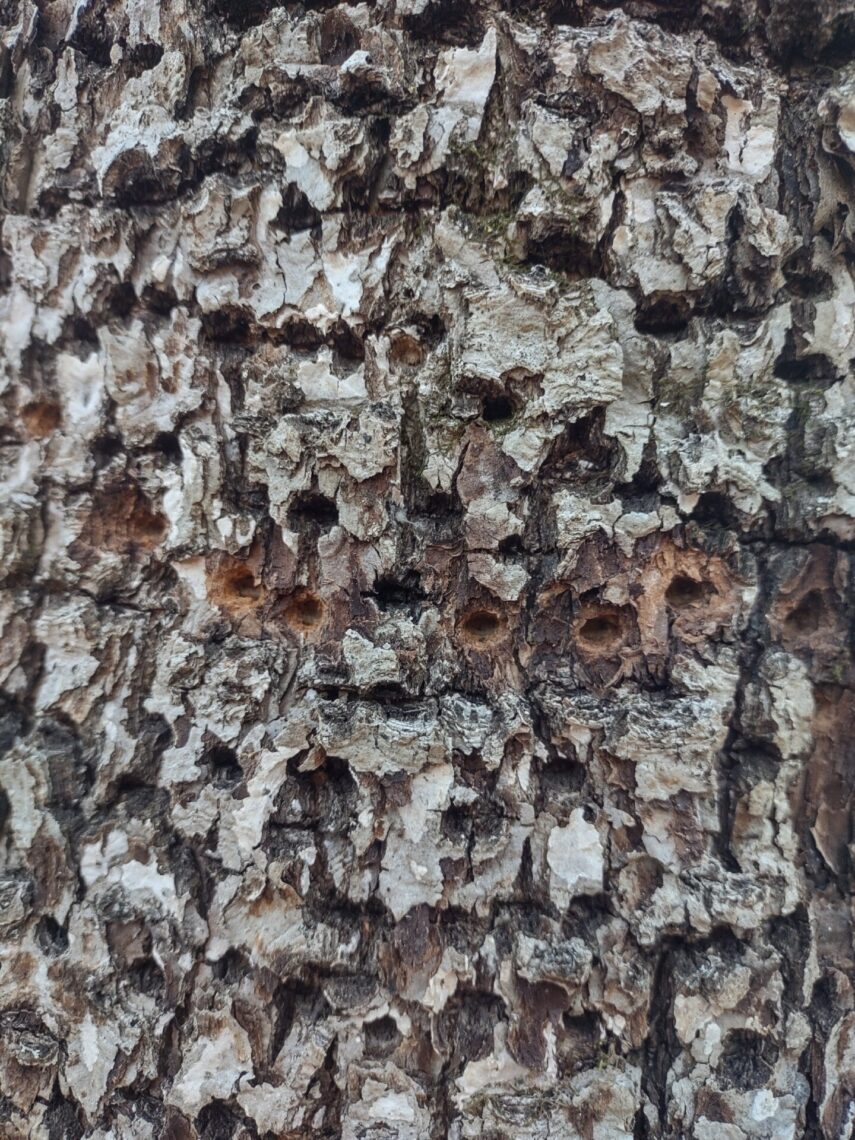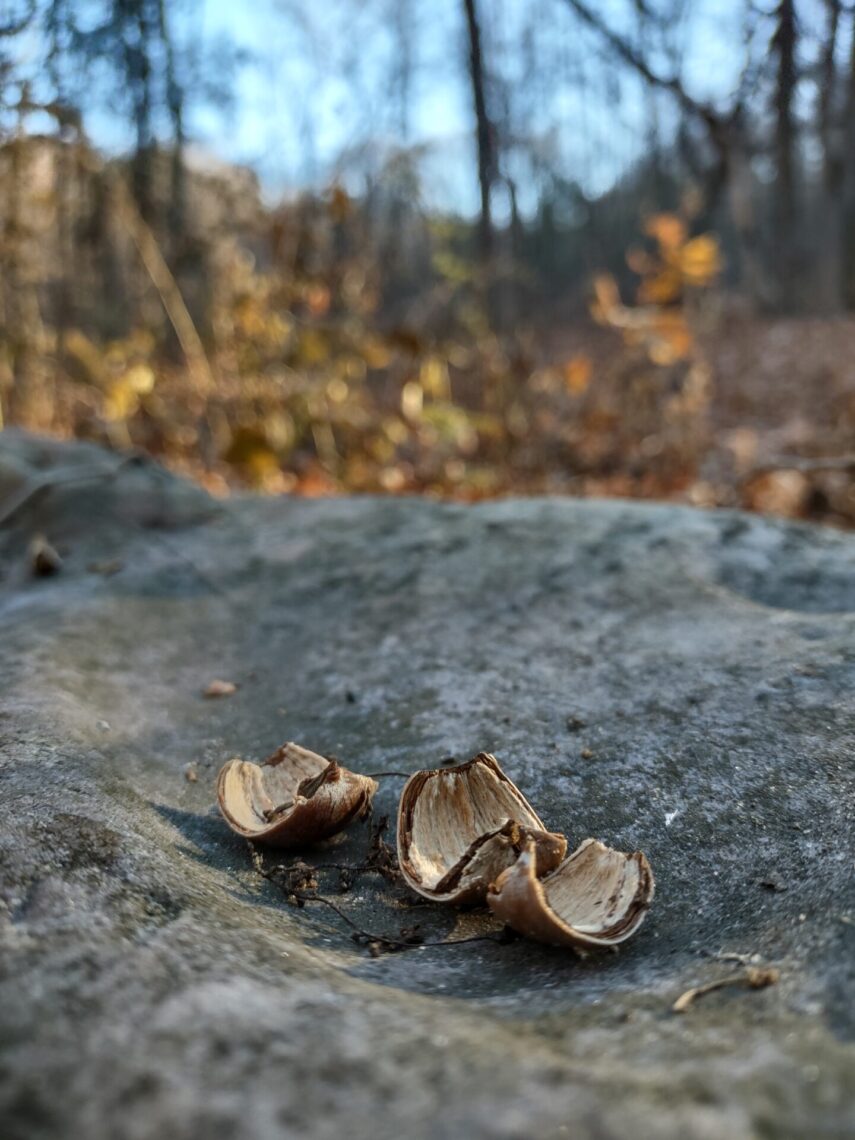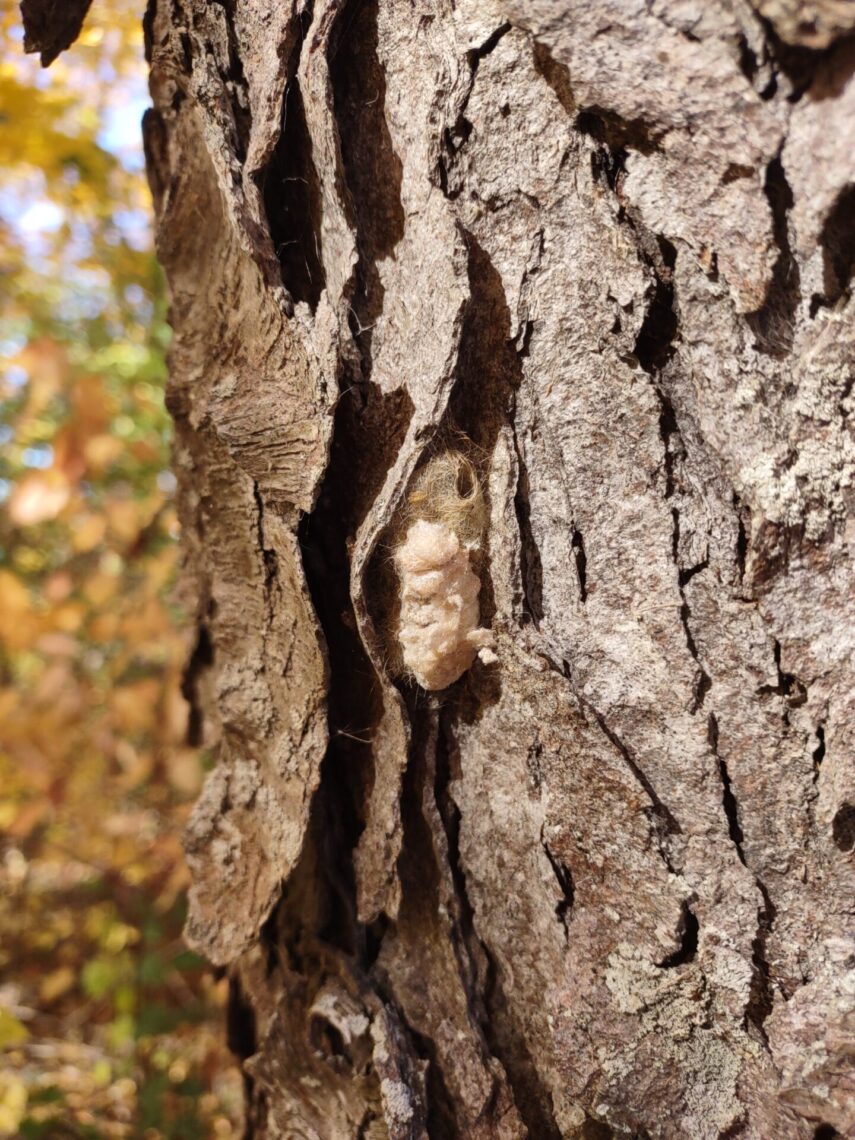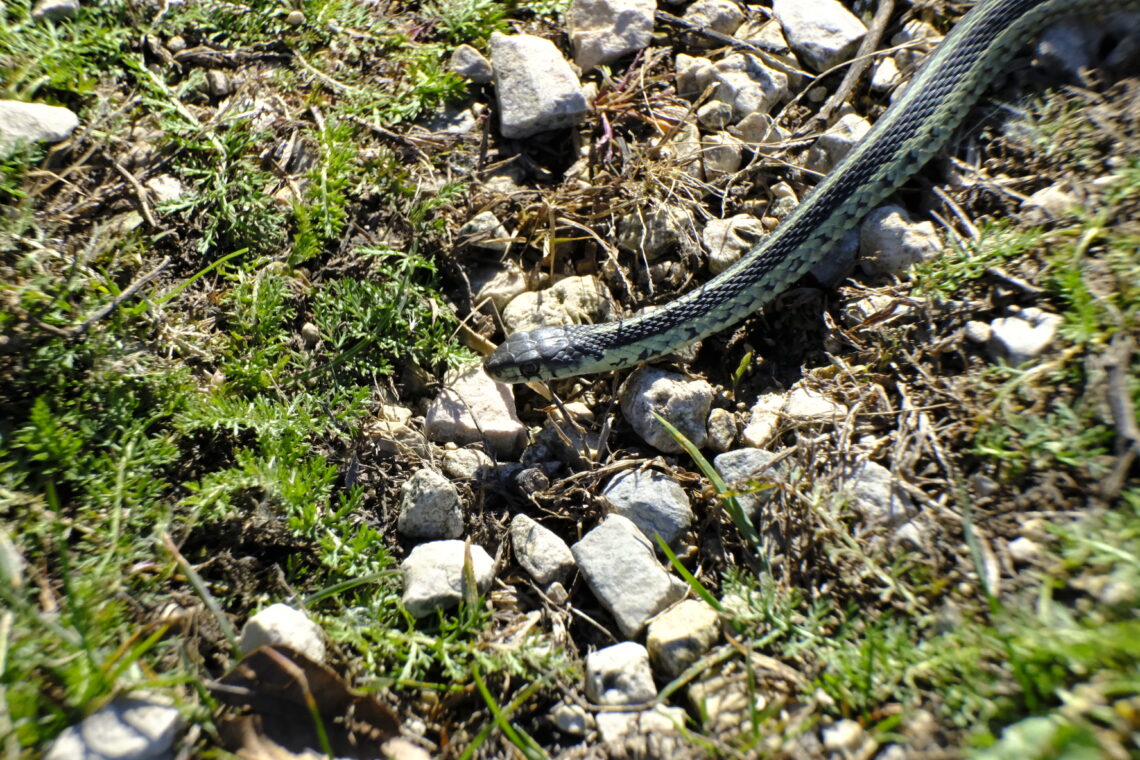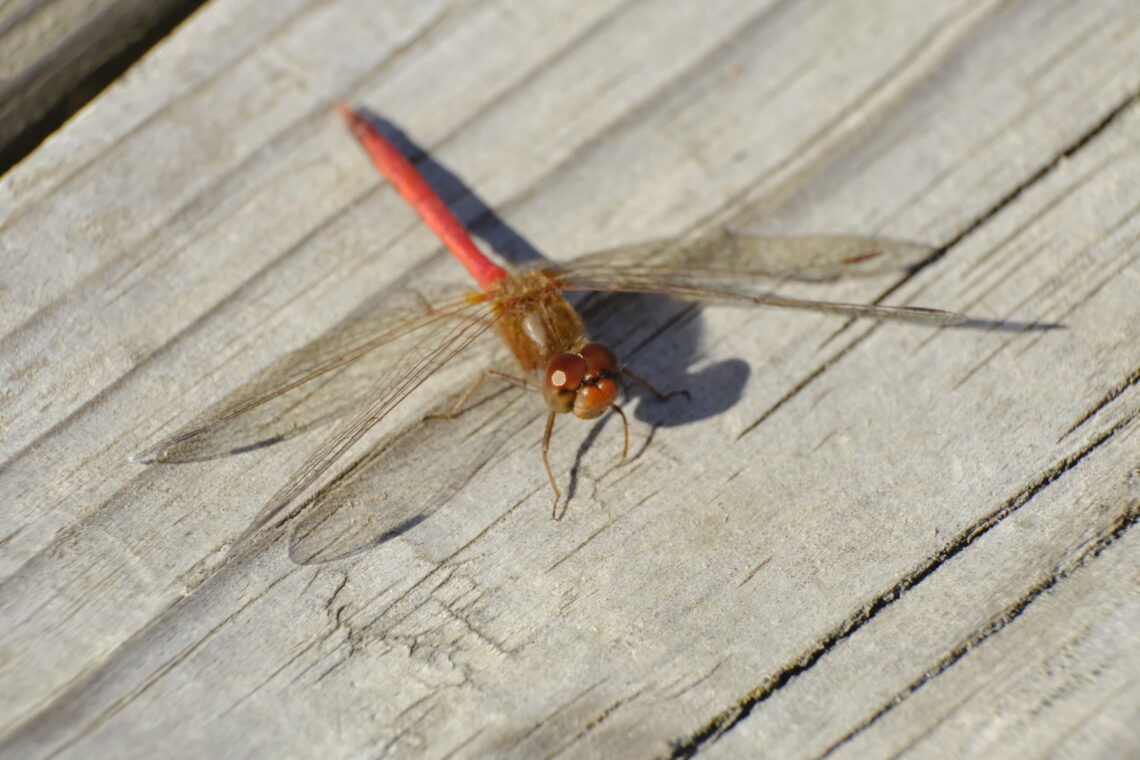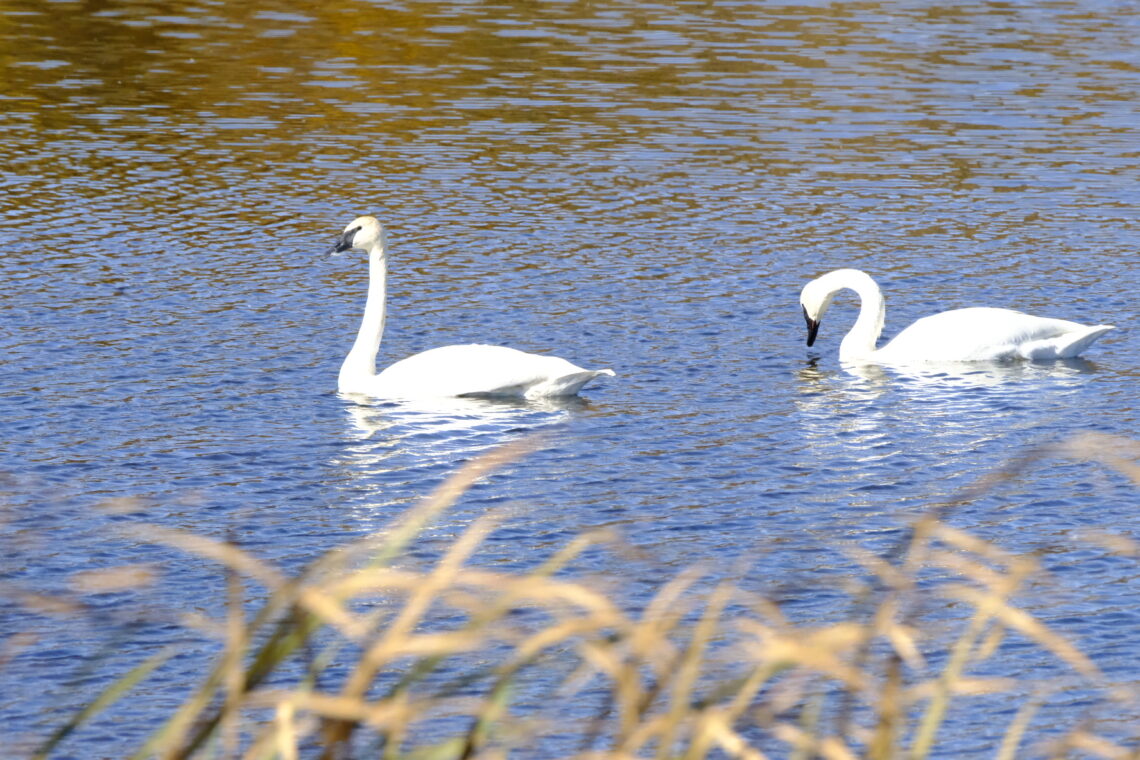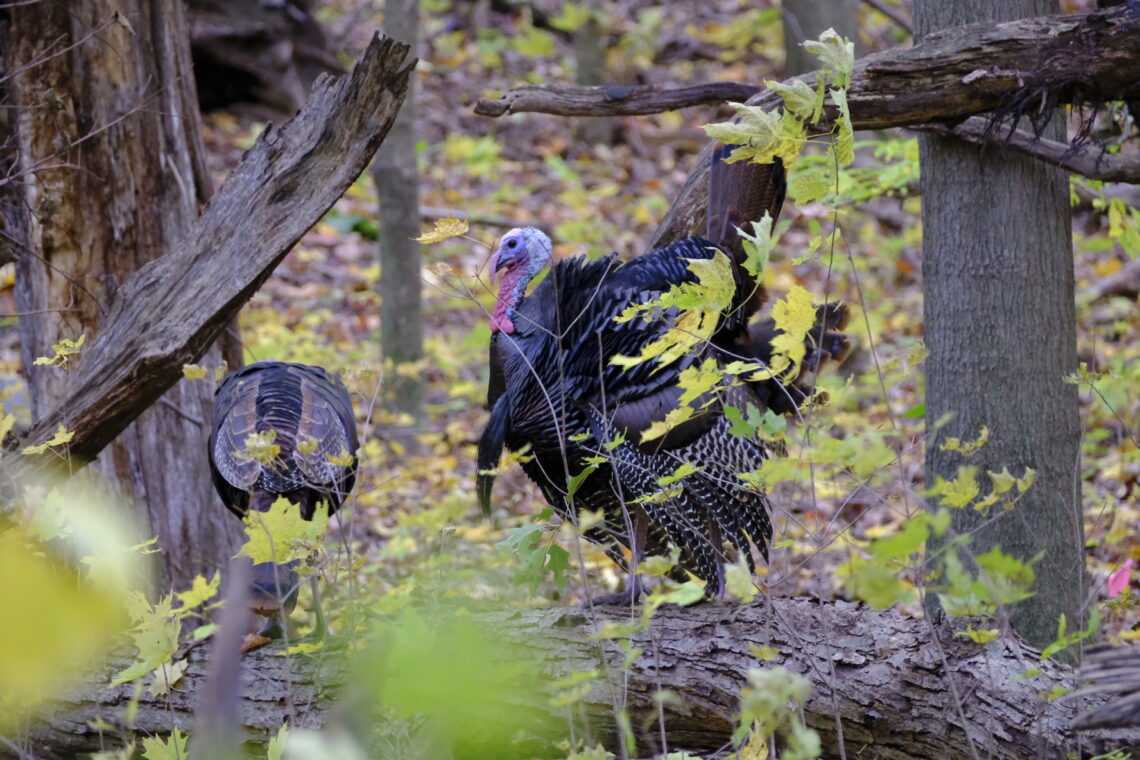Are you looking for an easy way to support conservation where you live in 2024?
It’s fast and simple to set up automatic monthly gifts to Groundswell. Your gifts will provide reliable, ongoing support to help protect special places for everyone in our community.
“In a short period of time, our land has been destroyed by exploitation and extraction of what our Mother Earth lovingly gives us. As an individual, I can only do so much to protect her, but when we come together we can be stronger and achieve more. This is why I contribute to Groundswell Conservancy’s efforts to protect land from being developed and further destroyed. I have seen closely, right in my own town, the work they do and I’m grateful for it.” –Yolibeth Rangel, Monthly Sustainer (pictured above)
Monthly giving is:
- Convenient: Your gifts are automatic and you don’t have to worry about remembering to donate online or by mail each year.
- Secure: Groundswell’s online giving platform is secure and your payments are encrypted, so you can rest assured your credit card or bank information is safe.
- Eco-friendly: Automatic gifts don’t require envelopes, stamps, or checks, and Groundswell can send you fewer appeal mailings knowing you are already making regular contributions.
- Special: As a Groundswell Sustainer, you’ll receive special seasonal emails with a behind-the-scenes look at what’s happening at Groundswell.
I hope you join the community of Groundswell Sustainers by signing up online today and selecting the monthly donation type. You can change your monthly gift amount or cancel at any time by calling 608-258-9797.
Thank you for caring about conservation where you live.
Happy almost New Year! I’m not sure about you, but it seems like this past year flew right on by. In my mind, I’m still picking tomatoes from my garden but when I look outside, I see snow. Before you know it, spring will be here so let’s get outside and try to enjoy every minute of it!
I know that I enjoyed just about every minute of the past week because I was fortunate enough to get outside and enjoy nature in Florida. I visited some family who recently moved there, so sit back and let’s take a quick virtual tour of what’s happening outside right now (a little further south)!
One of my favorite critters to watch on my trip were these brown pelicans. They reminded me of home in Wisconsin where we have American white pelicans. Just hop over to Patrick Marsh in the summer and you’ll see hundreds of them loafing about and hunting for fish.
Brown pelicans on the other hand are found in places with saltier water. They’re smaller than white pelicans, are much darker, and don’t have that bright orange beak. They also fish a little differently than our white pelicans in that they dive into the water from the air to catch fish. Seeing such large birds dive into the water from great heights was quite a spectacle!
I don’t even have to ask what my 6-year-old’s favorite part of the trip was. Seeing these small brown anole lizards around every corner and attempting to catch them was definitely his highlight. Did you know that Wisconsin is home to four different lizard species? There’s a really good chance you’ve never seen any of them though. However, these brown anoles were everywhere we went and that’s not surprising considering they are an introduced and very invasive species.
We have our own invasive species in Wisconsin (many of which I work to control), so it was interesting to learn about invasive species in Florida. These brown anoles displace the green anoles that are native to the state. The brown anoles are more aggressive, are better at adapting to the environment, and won’t be leaving anytime soon.
The highlight for me was getting to see migrating manatees in the wild! The whole experience was incredibly bizarre because we simply have nothing like this in Wisconsin. These slow-moving sea cows were such graceful swimmers and were much larger than I had thought (~10′ long)!
When I think of migration, my mind goes straight to birds even though there are tons of different species of wildlife that migrate. One of those species is the manatee which, like many people, travel to Florida in the winter months. Manatees are not able to tolerate water temperatures below 68F for long periods of time, so when it gets cold, they swim to natural springs (like the one pictured above) where the water stays at around 72F year-round.
It would be hard to talk about Florida without mentioning the alligators. Wisconsin has quite a few different species of reptiles, but none as large as the American alligator. We kept a ‘gator tally’ for the whole trip and ended with 18 of them! The alligator pictured above was a juvenile and only measured to about 2′ long. The mom wasn’t too far away so I snapped a few quick pictures from a safe distance and we got out of there ASAP!
Well, I hope you enjoyed my virtual tour of nature as it’s happening.
P.S. Give a year-end gift to Groundswell today! Thank you for helping to protect special places and connect others with nature.
See you next year!
We’ve accomplished so much together these past four decades. From our first land purchase in 1991 (protecting wetlands at Cherokee Marsh) to being the first nonprofit approved for a Knowles-Nelson Stewardship Program grant in 1993, we’ve come a long way. Here are just a few measures of how the tiny seed that was planted back in 1983 has grown. Learn more by visiting our history page on our website.
Over the last five years, we’ve converted 25 acres (5 acres per year) of agricultural land to native tallgrass prairie at Westport Prairie! We do this by collecting prairie seed from nearby remnant prairies that once made up the historic Empire Prairie. While this is an impressive accomplishment worth celebrating, we still have ~175 acres of agricultural land at Westport to plant to prairie. The more we plant, the more seed sources we have to collect from. This means our plantings will grow larger and larger each year. In fact, this winter our planting will be 6.5 acres; next year it will be 7+ acres.
So how do we collect enough seed to make these planting possible? A decent amount is collected by our summer interns and monthly volunteers. Starting about three years ago, the bulk has been collected by Kaylee Nelsen. From late September through November, Kaylee spends evenings and weekends drying, processing, and weighing the seeds of each prairie plant species. She’s got a knack for this kind of work, and it’s very impressive! Most people have trouble identifying plants in full bloom, but Kaylee can identify them when they’re all brown and shriveled up. Because of the important work Kaylee does for Groundswell and for conservation, we want to highlight her here. So, here’s what Kaylee has to say:
“This fall will mark my third season helping collect native seeds at Westport Prairie as part of Groundswell’s effort to convert cropland back into native prairie. When I was first recommended for the role, I had just finished my master’s degree in environmental conservation from the Nelson Institute and was looking for something to occupy my time while searching for a full-time job. The calming and grounding nature of native seed collecting quickly grew on me, and by November I was fully enamored with the complexity of the remnants along with the ambiance of sights, sounds, and smells. The following spring, I was employed full-time working in conservation with Good Oak Ecological Services and continued to collect seeds part-time for Groundswell in the fall. There is a great quote in the book Noah’s Garden by Sara Stein that poetically sums up why conservation is important to me.
‘Remove the pheasant’s cover or the butterfly’s flower and you have erased its space. The less variety of habitat the landscape offers, the less space there is until, when all is mowed, even an expanse the size of a golf course becomes just a hole in the world.’
I am grateful to have this opportunity to work with the wonderful Groundswell staff and volunteers to fill some of the holes in our world.” –Kaylee Nelsen
Groundswell is planting 6.5 acres of prairie on Saturday, December 9th from 9am-noon at Westport Prairie (5208 Bong Road, Waunakee) and we’d love for you to join. This will be an historic planting as it will reconnect the drumlin with our remnant prairie east of the tobacco barn. These prairies have been separated for a very long time, so reuniting them will be a grand accomplishment!
|
|
|
We can’t thank you enough for making #GivingTuesday a big success!
The outpouring of community support we saw yesterday was inspiring. Together, we raised $22,752.21 to support conservation where you live. An anonymous donor matched your generosity dollar-for-dollar, bringing our total to $45,504.42 (as of 12/8/23).
Your gift will plant a seed for local conservation. It will help grow connections to nature, equitable land access, thriving wildlife habitat, protected farmland, and more.
Thank you again for being part of this special day of giving.
Today’s the day! It’s #GivingTuesday and it’s your chance to “plant a seed” for local land conservation with a gift to Groundswell.
Every gift made today will be DOUBLED thanks to an anonymous donor! Your donation of $50 becomes $100, $100 becomes $200, $200 becomes $400, and so on.
#GivingTuesday is a great time to support conservation where you live. By donating today, you are…
Conserving wildlife habitat
Connecting kids to nature
Providing equitable access to land
…and much more!
You can also give by phone by calling 608-258-9797. Or you can mail a check to 211 S. Paterson St., Suite 250, Madison, WI 53703. Please include a note indicating your gift is part of #GivingTuesday.
Thank you for caring about special places!
The holidays are just around the corner and that alone is a good enough reason to start planning your next outdoor adventure! Whether it’s a stroll through your neighborhood, a hike at your local park, or a road trip to a faraway land, it’s time to get something in the books!
Sometimes when I head out on a hike, my goal is to see wildlife. Maybe there’s a species of migrating warbler in the area that I’m in search of, or maybe I’m looking for a monarch caterpillar feeding on some milkweed. While watching critters in action is fun, one of my favorite activities when outside is to look for signs of wildlife. Just about every creature leaves behind something that tells you it existed at one point even if you didn’t see it. It’s fun to put these puzzle pieces together and create a picture of what was happening while you were off doing human things.
For example, the thousands of yellow-bellied sapsucker holes I stumbled upon while out in the woods last week (pictured above). Just about every surface of this tree was tattooed by these native woodpeckers. I didn’t witness a single hole being drilled but I can picture the countless hours it took to meticulously create these holes so that they fill with sticky sap which traps insects for the woodpeckers to eat.
I always get a kick out of seeing cracked open nuts that are placed in very specific locations. Is it possible that the nutshell pictured above fell off of a tree directly over the rock and cracked open on impact? I suppose it’s possible. What’s more likely is that a hungry squirrel carried the nut over to the rock for a quick picnic. I’ve noticed over the years that like humans, many species of wildlife enjoy eating at cozy or scenic spots. Nothing beats eating lunch on a comfy seat with a nice view!
While out on a hike, my son noticed this fuzzy little casing carefully built in a bark crevice. Neither of us had seen one of these before so we got up close and examined it. It looked like an insect created it, but we didn’t know what kind. After a quick internet search, we discovered that it unfortunately was an egg mass created by a European spongy moth (formerly named the gypsy moth). These insects can cause some serious damage to our forests by defoliating trees very quickly. If you spot one of these in the wild, the Wisconsin DNR has tips for removing them so they don’t spread.
While finding animal tracks and sign is fun, it’s hard to beat observing an actual critter out in nature. The unseasonably warm weather we’ve been having this fall has encouraged snakes, like this garter snake pictured above, to get out and sunbathe on graveled paths that are warmed by the sun. This one was enjoying the rays so much that it didn’t bother moving until we almost stepped on it!
Well, I hope you enjoyed my virtual tour and I hope you enjoy the holidays; however you celebrate them!
P.S. You can help protect special places and connect others with nature. Give a year-end gift to Groundswell today!
See you next month!
The beautiful leaves of fall are upon us (sometimes literally)! It’s a wonderful time of year that seems to be slipping away very quickly. In fact, the last couple of frosty nights mixed with high winds and rain have caused these leaves of just about every color to fall to the ground at an alarming rate. So fast, that it’s impossible to tell that I raked them all out of my yard just the other day. As we inch our way into winter, let’s get outside and see what’s happening in nature right now!
Some hardy insects like the Autumn meadowhawk (pictured above) are still out and about. While visiting Horicon Marsh with my family the other day, we noticed a few of these dragonflies actively hunting smaller insects. It was really cool watching them land on the boardwalk and then rotate their head side to side as they watched insects fly by. I’ve noticed that with the colder weather, insect activity has really slowed down, but it was nice to know that there are some species that stick around for a while longer.
While out at Horicon, we were expecting to see a ton of waterfowl since migration is beginning but I think we were just a bit early. While we did see several different duck species, what was really neat was seeing a few handfuls of trumpeter swans floating about. Their beautiful white feathers against the various golds and browns of fall were breathtaking. It was a great reminder that Wisconsin is home to some pretty spectacular creatures.
New England aster is one of my favorite fall flowers and while most have already flowered and begun going to seed, there are a few still hanging on if you’re lucky enough to find them. While admiring them, don’t get too close because you may come face to face with an ambush bug! If you look closely at the photo above, you’ll see a little yellow insect that’s perfectly camouflaged with the yellow part of the flower. It’s waiting for a pollinator to visit so it can have a nice meal!
Lastly, I’ll leave you with these fancy turkeys I stumbled upon while out on a hike. Turkey strutting is more of a spring activity during their breeding season so it was a real treat getting to watch them do this just the other day. They kept hopping up onto a log to display and then would hop off (rinse and repeat).
Well, I hope you enjoyed my virtual tour and I’ll see you next time!
*Did you miss an article? Check out my collection of past monthly Nature Now articles on our website HERE. Just click the dropdown menu ‘Any Type of News’ and change to ‘Nature Now’ to filter the articles.
Brandon Mann, Easement Stewardship Manager, interviews John Meyer about farming and soil health as a part of our Soil Health Initiative.
1. Why did you enter farming?
I got a degree in Agricultural Engineering with a soil and water conservation emphasis from UW Platteville in 1977. I worked for a public utility in farmstead electrification in SW Wis from 1977 to 1981. I grew up on a diverse farm and saw what successful farmers were doing and I thought I could do that. It’s a good place to raise a family and my in-laws were interested in selling out. The opportunity was there.
a. What is your evolution as a farmer?
We started out moldboard plowing and working the soil many times to prepare a seedbed. The second year we went to a chisel plow and offset disk and eliminated a lot of trips and saved soil and moisture by doing so. We ran a small dairy herd on shares at the start. From 1981 to 1996 we milked 45 to 50 cows annually. In ‘96 we acquired a 70-cow barn, and we eventually expanded our cow numbers to 110 on the 2 farms. We had strict crop rotations and 50% of our crops were alfalfa/grass mixes. We alternated strips of row crops with hay. We were among the first to officially adopt a nutrient management plan. Most of that plan we were already doing. Managing nutrients saves money and makes you more efficient. It also prevents runoff of valuable nutrients.
b. You seem to be adaptable and like a challenge.
I am able to put a pencil to decisions. Do a cost benefit analysis with a payback. Consider the soil too. Leave a good farm for the grandchildren.
c. How has that influenced how you farm?
An economic analysis allows me to put concrete values on most decisions. Some things are not measurable, so I take that into account too. Leaving the land better than you found it has value. My father-in-law told me that.
2. What management practices related to soil health/conservation are you using on your farm and why?
We always kept hay in our rotation, and we included grass for 30 years. The contour strips and hay strips conserves soil. Our son Jered has taken over the farm and the conservation practices also. He converted to 100% no till. The no till enhances soil conservation and greatly reduces carbon needs also. He reads and talks to others.
a. What changes have you observed in your soil since adopting those practices?
I believe the topsoil depth has improved, especially on the north farm which we purchased in 1996 (original farm was 1988). The north farm saves and holds water better and the topsoil is deeper.
3. Do you speak with other farmers who’ve adopted things like cover cropping, no-till, diversifying their crop rotations, or rotational grazing?
We did a fair amount of rotational grazing in 2015 when our son took a more active role, and it helps with the forage quality on maintains the stands of grass too. We consulted other farmers. We have since downsized the beef cow herd. Our son researched the no till practices with neighbors. We are considering cover crops. It will be especially needed if we move away from hay crops. In the past, we used winter wheat as an alternative crop. It works much the same as a fall planted cover crop. But it provides summer grain and straw while controlling erosion.
a. What do they have to say about it?
Most farmers are aware of the told in the toolbox. May will ask how it works for you, just as we have asked others the same question.
4. What are your thoughts on the intersection of weather extremes and farming?
I have witnessed the longer growing seasons and I adjusted the maturity of my chosen hybrids to take advantage of the longer growing season. We get better yields. We are not the hottest place in the US but we definitely see the changes in temps. There is no debate of the increase of degree days of heat. I will not debate the causes, but I accept the facts. I see the corn belt moving north. The problem with that is the rolling hills of the SW Wisconsin is not conducive to continuous row crops without adjustments in practices. Those adjustments are no till, cover crops, and staying on the contour.
5. What positive trends have you seen develop in agriculture?
I think economics dictates good conservation practices. What I have witnessed in 40+ years of farming is better conservation, and even larger farms embracing conservation. Large farms are doing cover crops, and no till. Farmers are using nutrient management plans and rotations of crops. Farmers hire professional services and scouting for pests. And even though GMO’s get a bad rap, GMOs have greatly reduced the reliance on chemicals and pesticides. I used to plant conventional seeds and used chemical protections. Then I wore a rubber suit in order to safely plant and apply chemicals. I do not need to do this anymore. Three grains of sand sized particles of pesticide could kill a person almost instantly. I am glad to see that need is gone.
To learn more about the Soil Health Initiative, click here to read an update from Brandon Mann.

